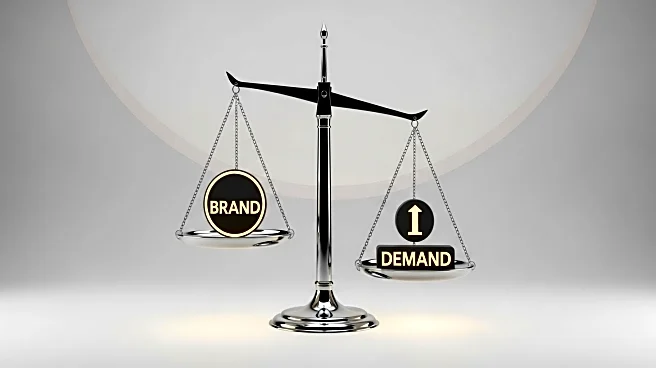What's Happening?
A recent study conducted by the ANA and Stein highlights a significant gap in marketing strategies among B2B organizations. Despite widespread acknowledgment of the benefits of integrating brand and demand efforts, only 3% of marketers have successfully unified these strategies. The study surveyed nearly 100 B2B marketers, revealing that while 72% are working towards balancing brand and demand investments, only 26% have achieved this balance. Organizations that have integrated brand and demand report a 208% increase in marketing-sourced revenue, according to LinkedIn benchmarks. Executive buy-in is identified as a crucial factor, with all unified companies having full C-suite sponsorship. However, only 36% of leaders overall prioritize integration, despite 69% recognizing its importance.
Why It's Important?
The findings underscore the potential revenue gains for companies that successfully integrate brand and demand strategies. This integration is crucial for long-term marketing efficiency, as it allows for sustained brand investment that enhances demand campaigns. The study highlights the challenges marketers face, including measurement, investment allocation, and creative effectiveness. These gaps often lead to an overemphasis on short-term demand results, which are easier to track but may not support long-term growth. The study suggests that organizations with executive alignment and balanced investment strategies can achieve significant revenue growth, emphasizing the need for leadership conviction and credible benchmarks.
What's Next?
For marketers aiming to unify brand and demand strategies, the study suggests focusing on executive buy-in and developing frameworks that combine early digital indicators with longer-term brand studies. Organizations like SAS are experimenting with different investment ratios to find the optimal balance between brand and demand. The study encourages marketers to move beyond short-term demand cycles and adopt a more holistic approach to marketing that integrates brand-building efforts. This shift requires a combination of science and art, with credible benchmarks and leadership conviction playing key roles in successful integration.
Beyond the Headlines
The study reveals deeper implications for the marketing industry, highlighting the need for a shift in mindset from short-term demand cycles to long-term brand-building strategies. This shift could lead to more sustainable marketing practices and improved revenue outcomes. The emphasis on executive alignment and balanced investment strategies suggests a cultural change within organizations, where marketing is seen as a strategic driver of growth rather than a tactical tool. The study also points to the importance of creative effectiveness and messaging alignment, which are critical for seamless campaign execution and achieving desired outcomes.











